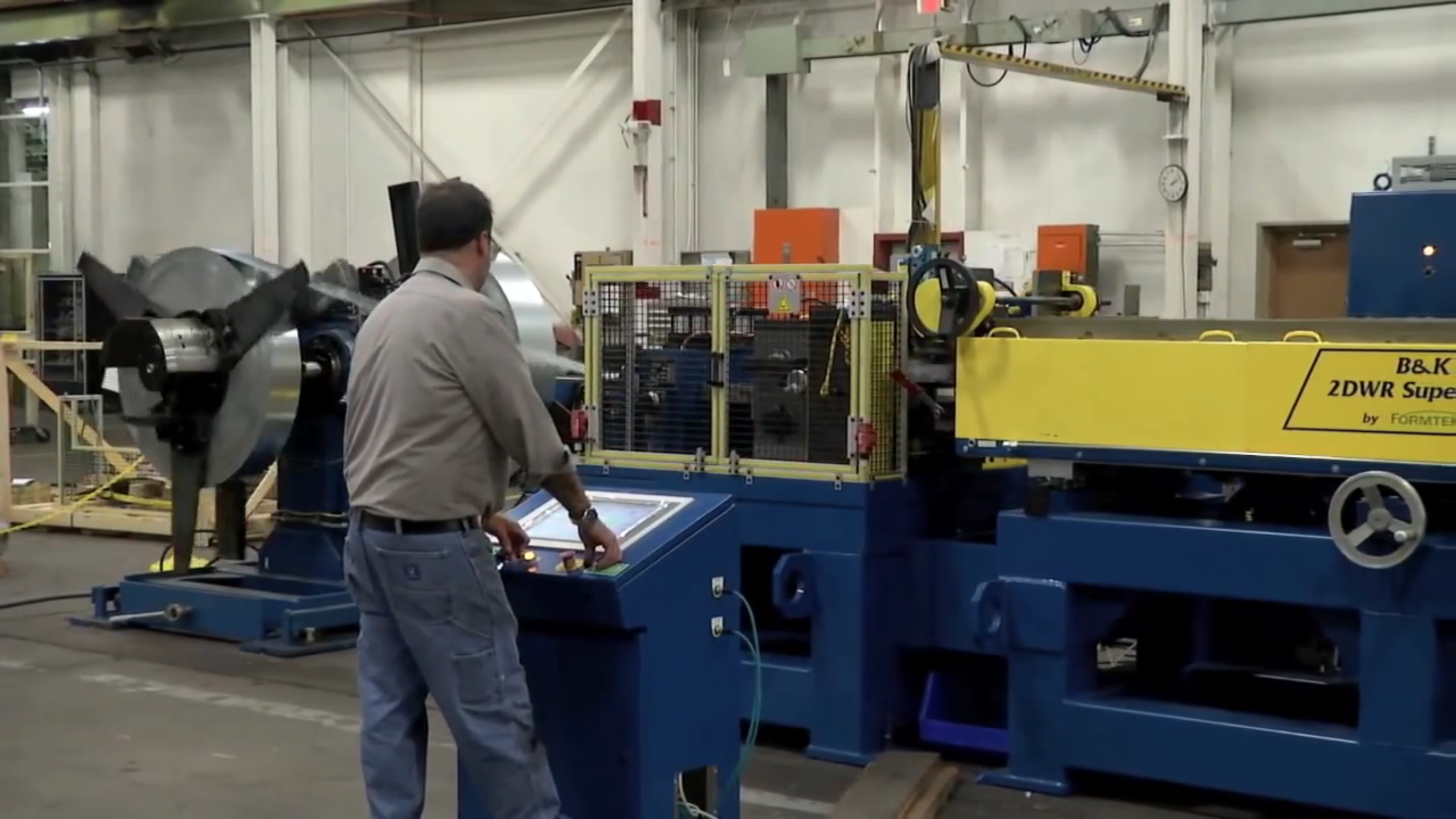A common question manufacturers face when starting or upgrading their roll forming processes revolves around the cutting process. Which is better for your shop and its end products: a pre-cut or post-cut system? If you're not familiar with these terms, we will define them in this post while giving you an idea of which system might be best for your business.
What do Pre-Cut and Post-Cut Mean?
Essentially, pre-cut systems feed a roll former a pre-cut blank that has a specific length. Post-cut systems, on the other hand, cut the length after the machine roll forms the part.
There are a few versions of how these lines can be arranged, but generically speaking, in a pre-cut line, you have either hand-fed blanks or an uncoiler with a pre-cut type of device — either a press or some other device that is cutting the strips and feeding them into the roll former.
With a post-cut line, there is an uncoiler being fed off a coil into the roll former and then cut with a specific type of press after the piece has been roll formed.
Which one do I use? Why would one company want to consider one versus the other?
While every shop is unique in terms of roll forming needs and layout, here are some of the main factors that will help you choose pre-cut vs. post-cut.
Typically, the further you get away from the uncoiler, the punching or the cutting tooling gets more expensive. In a pre-cut system, just in regards to the tooling system, you may need a simple flat strip shear. If you have multiple sizes of a certain shape that you're going to run on the roll former, a flat shear may be the easier way to achieve that than a post-cut system, where you may have to change out inserts in the post cut-off system. So it's a cost advantage.
In a flying pre-cut system, where we have a die that's flying right before the roll former, the overall line space is about the same compared to a post-cut system. But if for some reason it needs to run off of where it's stationary cut and has to go into a conveyor system that goes into the roll former, now that line layout could be a little bit longer, and it may be a space issue in the size of the plant.
Depending on the operation, there may be some kind of punching or some type of feature that's in the profile, at least from the punching aspect. If some kind of shear form is needed, and rolls need to be cleared out all the way through the roll former, it may not be advantageous to go ahead and do a pre-cut. Some of it comes into the length of the parts that we have to do, as well.



